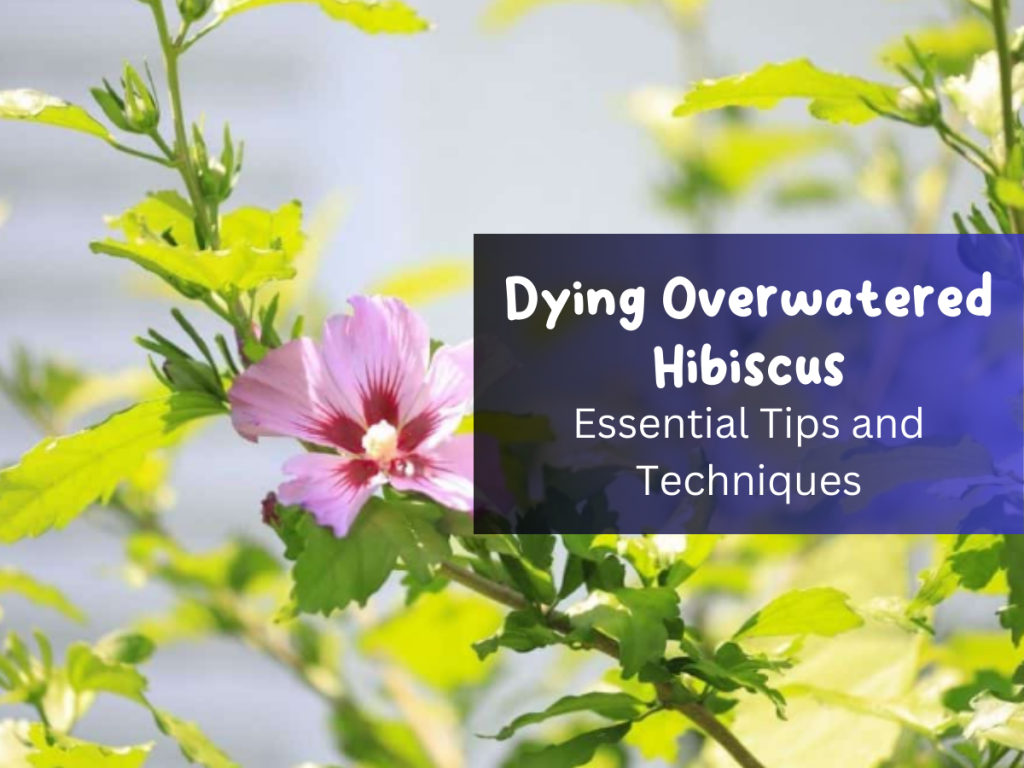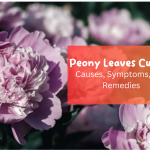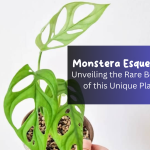Are your beloved hibiscus plants struggling due to overwatering? If you’ve noticed signs of decline, such as wilting leaves, yellowing foliage, or root rot, your hibiscus may suffer from excessive moisture. This guide will explore the causes, symptoms, and practical solutions to revive your dying overwatered hibiscus. Discover essential tips and techniques to restore vibrancy and ensure long-term health. Don’t despair, and help is here for your dying overwatered hibiscus.
Identifying Overwatered Hibiscus Plants
The first step in resolving the issue is recognizing the signs of overwatering. Here are some common indicators:
Wilting Leaves: Overwatered hibiscus plants may exhibit wilting leaves, often mistaken for under-watering. However, in overwatered plants, the wilting is typically accompanied by yellowing or browning of the leaves.
Yellowing Leaves: Excessive moisture causes hibiscus leaves to turn yellow due to reduced oxygen availability and nutrient deficiencies caused by waterlogged roots.
Root Rot: Overwatering hibiscus plants increases the risk of root rot, characterized by foul-smelling, mushy, and discolored roots. Healthy roots should be firm, white, and show signs of new growth.
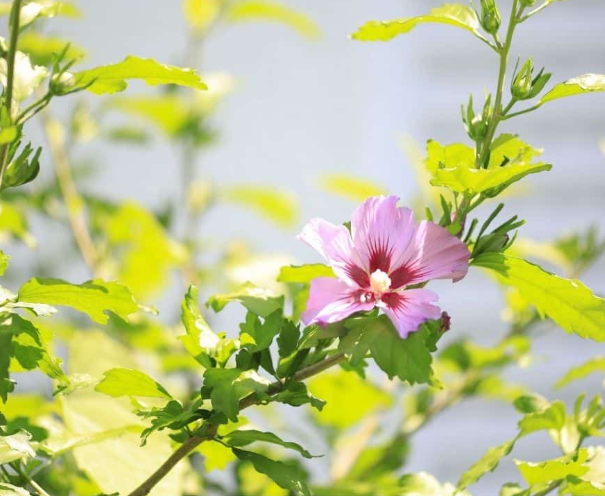
Reviving Overwatered Hibiscus Plants
To restore your overwatered hibiscus plant to its former glory, follow these steps:
Assess the Damage: Carefully inspect the plant to determine the extent of the damage. If root rot is severe, it may not be easy to salvage the plant. However, there is hope for recovery if there are still healthy roots.
Remove Excess Water: If the hibiscus is potted, gently tip the pot to allow any excess water to drain out. Avoid overcompensating by withholding water entirely, as this can stress the plant further.
Adjust Watering Practices:
- Establish a proper watering routine to prevent further damage.
- Only water your hibiscus when the top inch of the soil feels dry.
- Ensure the pot or planting area has adequate drainage to prevent water accumulation.
Prune Damaged Foliage: Trim away any yellow or brown leaves, as they are unlikely to recover. Focus on maintaining healthy foliage to encourage new growth.
Repot with Fresh Soil: If root rot is severe, carefully remove the plant from its pot and gently rinse the roots to remove any diseased portions. Repot the hibiscus using fresh, well-draining soil.
Provide Optimal Conditions:
- Place your hibiscus in a location that receives bright, indirect sunlight.
- Maintain a temperature range between 60°F and 90°F (15°C to 32°C) for optimal growth.
- Avoid exposing the plant to drafts or extreme temperature fluctuations.

Preventing Overwatering in Hibiscus Plants
Prevention is vital to ensuring the long-term health of your hibiscus plants. Here are some guidelines to avoid overwatering:
Watering Frequency: Only water hibiscus plants when the top inch of the soil feels dry. Use your finger to check soil moisture levels before watering.
Soil Drainage: Use well-draining soil or amend garden beds with organic matter to improve drainage; this helps prevent waterlogged conditions that lead to root rot.
Pot Selection: If growing hibiscus in pots, choose containers with drainage holes to allow excess water to escape. Ensure the pot size is appropriate for the plant, allowing for proper root growth.
Mulching: Apply a layer of organic mulch around the base of the plant to help retain moisture and regulate soil temperature; this helps to prevent excessive evaporation without creating waterlogged conditions.
Observation and Adjustment: Regularly observe your hibiscus plant for signs of distress. Adjust your watering schedule based on weather conditions, plant size, and individual requirements.
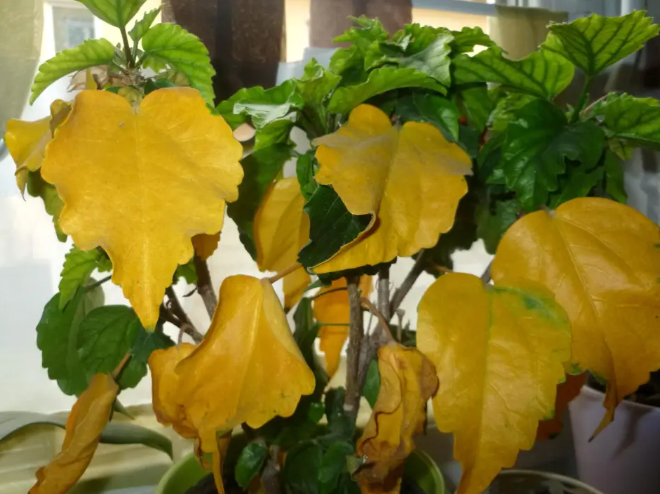
Conclusion Dying Overwatered Hibiscus:
In conclusion, dealing with a dying overwatered hibiscus can be disheartening, but with the proper knowledge and actions, you can bring it back to life. By identifying the signs of overwatering, implementing appropriate measures to address the root cause, and providing optimal care moving forward, you can revive your hibiscus and witness its beauty flourish again. Remember to balance watering, ensure proper drainage, and maintain a suitable environment for your hibiscus to thrive. You can save your dying overwatered hibiscus with patience and dedication and enjoy its vibrant blooms for years. Read article about Monstera in the Wild and Syngonium Aurea in Avi Hoffman Garden.
FAQ
A: Root rot in hibiscus plants can be identified through several signs. Look for discolored, mushy, or foul-smelling roots. Healthy roots should be firm, white, and show signs of new growth. Additionally, if your hibiscus exhibits wilting leaves, yellowing foliage, or a decline in overall vigor despite proper care, root rot may be the underlying cause.
A: An unhealthy hibiscus may display various symptoms indicating stress or disease. Common signs include yellowing leaves, wilting or drooping foliage, stunted growth, brown spots or patches on leaves, leaf drops, and lack of blooming. Overwatering, nutrient deficiencies, pests, diseases, or environmental stressors can cause these symptoms.
A: Treating a stressed hibiscus involves addressing the underlying cause of stress and providing appropriate care. Start by identifying the specific stressor, such as overwatering, inadequate sunlight, nutrient deficiencies, or pests. Adjust the watering routine, ensure proper drainage, provide sufficient sunlight, and consider applying balanced fertilizer to correct nutrient deficiencies. Additionally, protect the plant from extreme temperatures, drafts, and pests. Regular monitoring and proper care will help the hibiscus recover.
A: Yes, overwatering can lead to yellowing leaves in hibiscus plants. When the roots are constantly saturated, they may suffer from reduced oxygen availability and nutrient deficiencies, resulting in yellowing foliage. This yellowing is often accompanied by wilting and browning of the leaves. Proper watering practices, allowing the soil to dry out slightly between waterings, can help prevent yellowing caused by excessive moisture.
Note: If you have additional concerns or specific symptoms not addressed in this FAQ, it’s recommended to consult a gardening expert or horticulturist for personalized advice.

